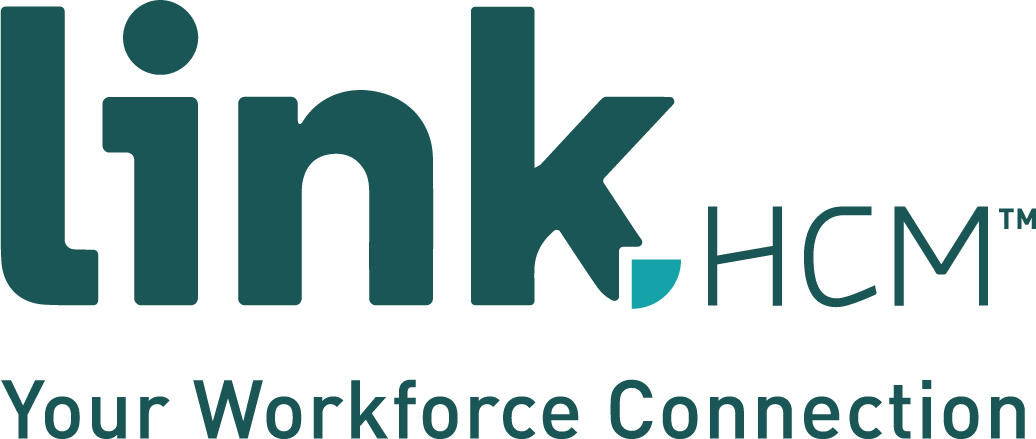
After months of debate, federal lawmakers were finally able to settle on a massive $900 billion stimulus bill, the Consolidated Appropriations Act, at the beginning of January. The Act includes several provisions to aid small businesses, including $284 to replenish and relaunch the Paycheck Protection Program.
Here's what's included in the new stimulus package for small and medium-sized businesses.
Paycheck Protection Program (PPP) Round 2
Reopening Dates
On January 8, the SBA and Treasury announced guidance around the latest replenishment of the Paycheck Protection Program and, most importantly, the reopening dates.
To make the program more accessible, the SBA and Treasury are giving community financial institutions first dibs at issuing loans. Community financial institutions exclusively can make first-draw PPP loans starting Monday, January 11, and second-draw loans on Wednesday, January 13.
The program will open to all participating lenders shortly after that, but a specified date is TBD.
First Draw Loans
Businesses that did not apply for a PPP loan before have a second chance at financial relief. The new funding is available through March 31, 2021, or until funds are exhausted. For the most part, first-time borrowers will follow the same guidelines and eligibility outlined in the original program.
Your business is eligible for a first draw loan if:
- You have fewer than 500 full-time, part-time or seasonal employees
- Your business was operating before February 15, 2020, and is currently operating
First draw loans are equal to the lesser of:
- 2.5x your average monthly payroll costs in the 12 months before your loan application or the calendar year 2019
- $10 million
Second Draw Loans
The replenished program will allow businesses who received a PPP loan in 2020 to apply for the second round of funding if they meet specific criteria.
Your business is eligible for a second draw loan if:
- You have less than 300 full-time, part-time, or seasonal employees
- You have experienced a revenue reduction of at least 25% in the first, second, or third quarter of 2020 when compared with the same quarter in 2019
- You have used or plan to use the full amount of your first-round PPP loan
- Your business was operating before February 15, 2020, and is currently operating
Second draw loans are equal to the lesser of:
- 2.5x your average monthly payroll costs in the 12 months before your loan application or the calendar year 2019
- 3.5x your average monthly payroll costs for businesses classified under Code 72 of the North American Industry Classification System (NAICS)
- $2 million
Changes to Eligible PPP Expenses
The most appealing aspect of a PPP loan is that it is 100% forgiven if you use the money according to the guidelines. And while you are still required to spend 60% on payroll costs and 40% on eligible expenses, the expenses considered eligible have expanded slightly.
Under the new loan terms, eligible non-payroll expenses include:
- Business software or cloud services that facilitate business operations
- Property damage, vandalism, or looting costs due to unrest that occurred in 2020
- Supplier costs essential to operating the business
- Expenses related to keeping employees safe at work, supplying personal protective equipment (PPE), plastic separators, outside dining equipment
Taxability and Deductions
There has been a lot of confusion around contradicting information we received from Congress and the IRS regarding PPP loans' tax implications. The new bill clarifies taxability and the deduction of expenses paid with PPP funds.
Tax implications effective as of March 27, 2020 (when the CARES was enacted):
- Forgiven PPP loans are not taxable income. This means you do not have to report any forgiven PPP amount as gross income.
- Expenses paid with PPP loans that receive forgiveness are tax-deductible. Businesses can now write off expenses paid with PPP funds that receive forgiveness.
Simplified Forgiveness for Loans Under 150k
The new bill includes a streamlined forgiveness application for anyone borrowing less than $150,000 (in addition to the current simplified application for loans under $50k). The application has not yet been released but will be a one-pager requiring the borrower to sign and certify a description of:
- the number of employees retained because of the loan
- the estimated amount of the loan spent on payroll costs
- the total loan amount
How to Apply for a PPP Loan
The SBA and Treasury announced Friday, January 8, that the new PPP will begin reopening the week of January 11. To make the program more accessible, community financial institutions exclusively can make first-draw PPP loans starting Monday, January 11, and second-draw loans on Wednesday, January 13.
The PPP will open to all participating lenders soon after that (date TBD) and remain open through March 31, 2021.
Whether you are a first or second-time borrower, the best way to start is by calling banks or lenders in your area to see who is participating in the program.
To access borrower and forgiveness applications currently published, visit the SBA's dedicated PPP page.
You can read the full the guidance released by the SBA at the links below:
- PPP Guidance on Accessing Capital for Minority, Underserved, Veteran and Women-Owned Business Concerns
- Interim Final Rule on Paycheck Protection Program as Amended by the Economic Aid Act
- Interim Final Rule on Second-Draw Loans
Other Financial Aid
The PPP is by far the most attractive option for financial relief included in the Act, but it is not the only option. There are a number of other provisions included in the bill to assist small businesses with the financial hardship of COVID-19 (that seems to be never-ending).
Here are some of the financial aid programs available in 2021.
Replenished EIDL Program
Economic Injury Disaster Loans (EIDL) are low-interest loans designed to help small business through economic hardships, like a pandemic. The CARES Act modified the program to include a $10,000 cash advance that is essentially treated as a grant that does not require repayment, and as expected, the funds ran dry quickly. But, the Consolidated Appropriations Act adds $20 billion to replenish the grant program specifically for low-income communities who could not secure grants.
The max cash advance amount remains at $10,000 under the new Act. And, small businesses in these communities that received less than a $10,000 grant can apply to receive the difference between the amount they received and $10,000.
You do not have to be approved for the EIDL loan or accept it to receive the $10,000 grant, but you do have to apply for the loan to get the grant. If you are approved and accept a loan, the cash advance is included in the total amount. So, if you qualify for a $100,000 loan, you will receive $10,000 as an emergency cash advance (grant) that you do not have to repay.
We highly recommend you apply for any EIDL amount quickly! The funds will go fast, as these are $10,000 grants (not loans) that do not have the be repaid.
The new bill also lifts the requirement to reduce your PPP forgiveness by the amount of your EIDL cash advance. Now, small businesses are able to receive and hold onto their full PPP forgiveness and EIDL grant.
Unlike the PPP, the EIDL has a much more streamlined application process. You can apply for an EIDL loan directly through the SBA website (quickest method) or in person at Disaster Recovery Center.
7(a), 504 and Microloans
The new bill also replenishes a handful of other SBA loan programs to help out small businesses. Some of the updates include:
- Waived borrower fees for 7(a) and 504 loans
- Increased guarantees on 7(a) loans
- An Express 504 loan program
- Extended repayment periods for Microloans
- 7(a) loans and 504 loans can be used to refinance each other
- Covered principal, interest, and loan fees for at least six months for 7(a) loans, 504 loans, and Microloans
$12 Billion for Community Development Financial Institutions (CDFIs) and Minority Depository Institutions (MDIs)
Poorly executed relief programs at the beginning of the pandemic exposed major gaps in access to financial aid for businesses owned by people of color and businesses in low-income areas. The new bill sets aside $12 billion for CDFIs and MDIs to serve businesses in low-income, minority, and rural communities specifically.
To find CDFIs or MDIs in your area, use the CDFI locator tool to get started.
Grants for the Entertainment Industry
$15 billion of the new bill has been set aside for grants to businesses in the entertainment industry with a portion ($2 billion) specifically allocated for businesses with fewer than 50 full-time employees.
Entertainment businesses eligible for grants include:
- Live venue operators or promoters
- Theatrical producers
- Live performing arts organization operators
- Museum operators
- Motion picture theatre operators
- Talent representatives who demonstrate a 25 percent reduction in revenues
Updated Employee Retention Tax Credit
Under the Consolidated Appropriations Act, small businesses can now take advantage of both the PPP and the ERTC without penalization. And, the new bill expands the Employee Retention Tax Credit, making more companies eligible than before.
Here are the updates to the Employee Retention Tax Credit.
Eligibility
Your business is eligible if you:
- Have 500 or fewer employees (formerly 100 employees or fewer)
- Experienced a decline in gross receipts by more than 20% in any quarter of 2020 compared to the same quarter in 2019 (reduced from a 50% decline in gross receipts)
Tax-exempt organizations that fall under 501(c) must have partially or fully suspended all operations in 2020 or 2021 to qualify.
It's also important to note that eligibility ends if your gross receipts in a 2020 quarter exceed 80% compared to the same quarter in 2019. For example, if your business is down 21% in revenue in the third quarter of 2020, but you restore revenue by 81% in the fourth quarter, you will only qualify for the credit up to the third quarter.
How Much the Tax Credit is Worth
The ERTC is worth different amounts for wages paid in 2020 and wages paid in 2021. Here's the breakdown:
- Wages paid after March 12, 2020, and before January 1, 2021: ERTC can be applied to 50% of qualifying wages up to $10,000. This means a maximum of $5,000 per employee could be credited.
- Wages paid after January 1, 2021, and before July 1, 2021: ERTC can be applied to 70% of qualifying wages of up to $10,000 per quarter. This means a maximum of $14,000 per employee could be credited through June 30.
How to Claim the Credit
If you determine your business meets the requirements, the refundable tax credit can be applied against the employers' portion of payroll taxes. In other words, you are reimbursed for the credit with money that you would typically deposit for quarterly taxes.
Even though the new bill allows companies to participate in both programs, you still need to be cautious of double-dipping. Many payroll expenses are eligible for various tax credits; however, you cannot claim the same expenses twice. Here are some stipulations to keep in mind:
- You cannot claim the ERTC and the Work Opportunity Tax Credit for the same employee in the same period.
- You cannot use PPP funds and ERTC to cover the same payroll costs.
- You cannot claim the ERTC and FFCRA tax credit on the same wages paid for sick or family leave.
Unlike the PPP, there is no application process to claim the ERTC. All you need to do is talk to your payroll provider or tax preparer about utilizing the credit.
The IRS has yet to release new guidance around changes made to the ERTC under the new bill, but any updates will be posted to the FAQ page of the IRS website.


Leave a Comment